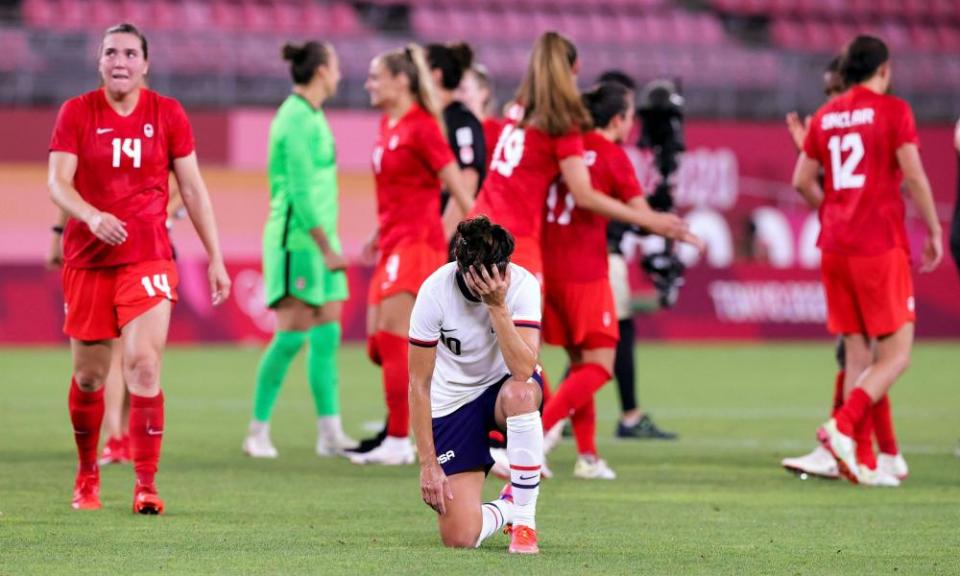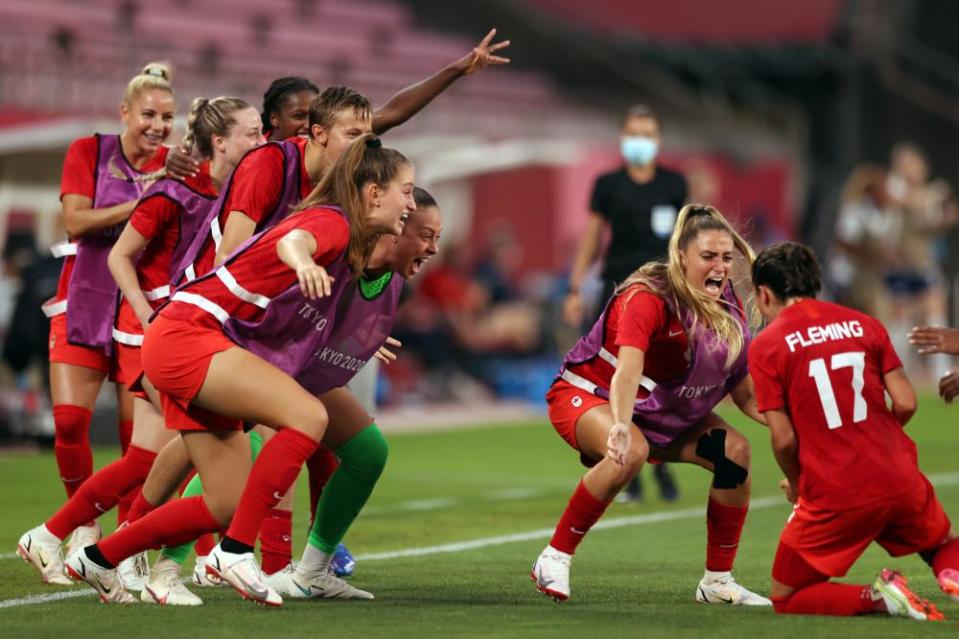USA coach Vlatko Andonovski fiddled but his players burned at the Olympics

United States triumphs at the 2015 and 2019 Women’s World Cups were defined by squads which peaked at exactly the right time. The talent was undeniably there, but in 2015, it took half a tournament to find the right combination. Four years later, the path was more difficult, but the team clicked from start to finish, besting four tough European foes in the knockout stage.
The timing at the Tokyo Olympics, however, could not have been worse. A team rich with talent could not establish any rhythm at these Games, and the Americans’ struggles culminated with a semi-final loss to Canada on Monday in which the US had ample time on the ball but few ideas in the final third – a criticism which haunted the team after its previous Olympic failure.
Several players among the most talented in the world had decidedly average tournaments. One or two of those players struggling could’ve been mitigated by a relatively deep roster; simultaneously, it was a recipe for disaster. Megan Rapinoe said after the loss to Canada that the one player exempt from such criticism may be goalkeeper Alyssa Naeher – but Naeher left the semi-final injured after 30 minutes.
“I just think the players have a lot to look at ourselves about,” Rapinoe said. “And this is not like, oh we need to play better and getting on each other. I think we need to look at ourselves and we need to perform better, period.”
Rapinoe’s statement was an unprompted defense of USA head coach Vlatko Andonovski, who had just been asked to diagnose his team’s problems at the tournament. Andonovski used five different line-ups in five games as he tried to both keep legs fresh and find some combination to ignite his team. His game management will be subject to criticism, but as Rapinoe said explicitly, Andonovski’s players provided him few options with their performances.
Few of those problems could have been predicted prior to the Olympics. Abby Dahlkemper is among the best two-way center-backs in the world thanks to her long-range distribution. Forwards Alex Morgan and Christen Press were in top form coming into the tournament, and even Tobin Heath looked like her best self despite a five-month layoff due to injury.
Any combination of three from the US’ four primary central midfielders could be considered elite. Julie Ertz’s injury in May posed some questions, but Lindsey Horan looked ready as the fill-in No 6, and Ertz ended up fit for the Olympics, anyway. Opponent quality aside, the Americans’ combination play was, at times, spectacular prior to the Olympics.
Related: USA stunned by Jessie Fleming penalty as Canada reach Olympic soccer final
In Japan, however, it was absent entirely. The US midfield got pushed around through stretches of the tournament, including a shellacking at the hands of Sweden. Andonovski also played with the midfield combination, favoring Sam Mewis over Rose Lavelle in the quarter-final and then reversing that in the semifinal. Dahlkemper struggled mightily all tournament, to the point that Andonovski started Tierna Davidson alongside Becky Sauerbrunn in the semi-final. Davison gave up the penalty – a harsh but justifiable call – which led to Canada’s only goal.
Few forward combinations – the deepest of the United States’ lines – proved fruitful, with the US only scoring twice in four games outside of that 6-1 group-stage win over an underdog New Zealand side.

Naeher’s heroics are largely the reason the US even made it this far. She saved three spot-kick attempts in the quarter-final, including two in the shootout, as the Netherlands probed for a winner and controlled play in the second half and extra time. But Naeher could not come to the rescue in Monday’s semi-final after leaving the game with an apparent knee injury. There was nothing she would have been able to do about Jessie Fleming’s perfectly struck penalty kick; backup goalkeeper Adrianna Franch got a good jump on the shot and still could not stop it.
Goalkeeping and defending were not the US’s problem against Canada, anyway. Canada created nothing from open play – a measly 0.16 expected goals outside of that penalty kick – and hardly threatened the American goal, regardless of who was in it. Bev Priestman set up her side to capitalize on a single moment, whether a counterattack or a freak foul in the box, and they executed the tactics to perfection, limiting the US to hopeful crosses and shot attempts mostly from outside the 18-yard box.
Most frustrating for the US might be that such tactics are deeply similar to the ones which foiled them at the 2016 Olympics, a shortcoming which they had ostensibly solved. This collective Olympic performance has been something different still from 2016: flat and decidedly not like the dominant, high-scoring US team of even the very recent past, but difficult to pinpoint exactly how.
“There’s all the preparation you can do and there’s all the analyzing and there’s all the tactics and everything, and then there’s everything else,” Rapinoe said. “And that’s what we were missing. You can’t put a name on the everything else, but it’s just the getting it done from players – from all of us.”
The US still have a bronze-medal match on Thursday against Australia, providing one more opportunity for the Americans to play with the joy which multiple players said they have been missing. An older roster with several players likely competing in their final major tournament will not take the opportunity for granted, but there will be an undertone of disappointment even in victory there. It would be too little, too late for the gold-standard by which this US team operates. A team with plenty of talent had a terribly timed dip in form.

